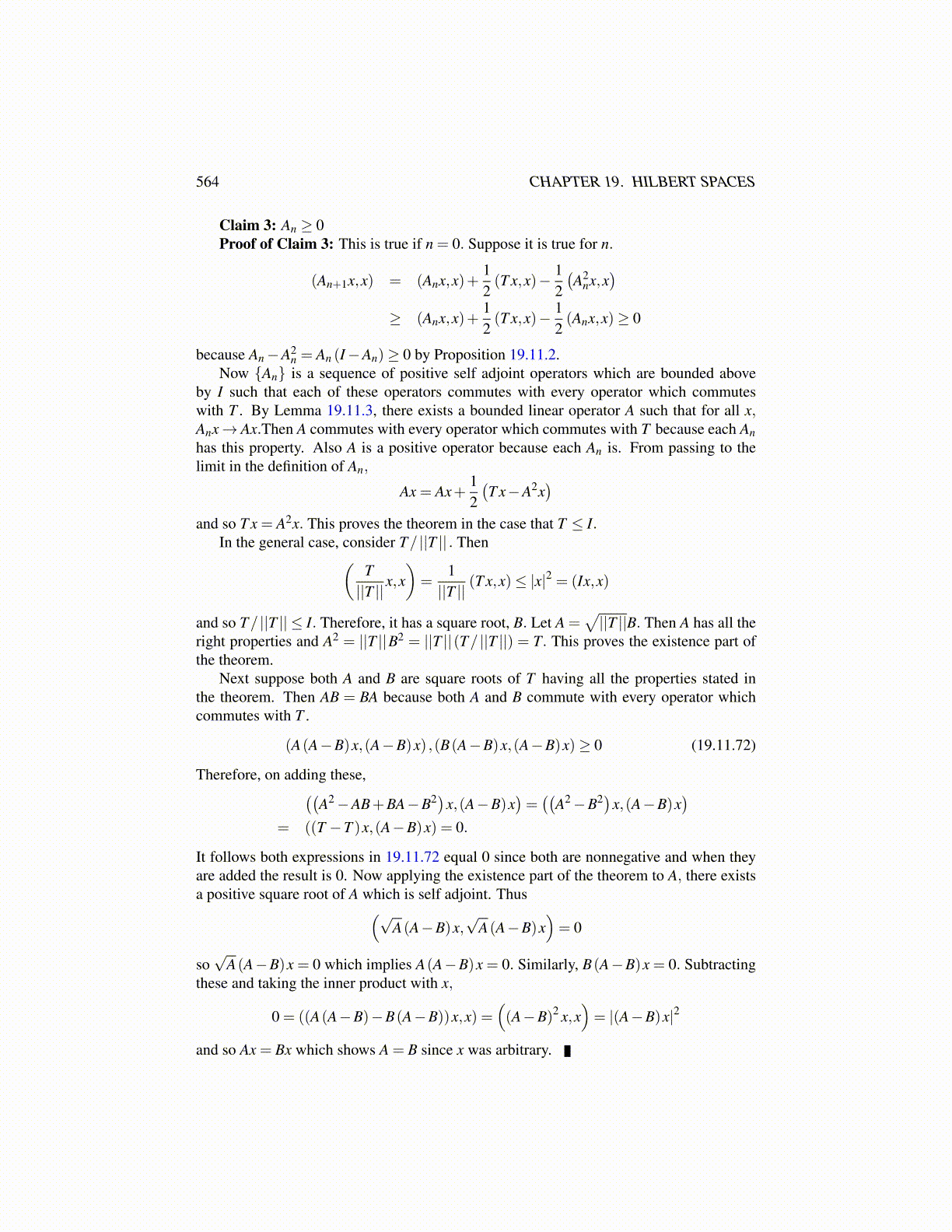
564 CHAPTER 19. HILBERT SPACES
Claim 3: An ≥ 0Proof of Claim 3: This is true if n = 0. Suppose it is true for n.
(An+1x,x) = (Anx,x)+12(T x,x)− 1
2(A2
nx,x)
≥ (Anx,x)+12(T x,x)− 1
2(Anx,x)≥ 0
because An−A2n = An (I−An)≥ 0 by Proposition 19.11.2.
Now {An} is a sequence of positive self adjoint operators which are bounded aboveby I such that each of these operators commutes with every operator which commuteswith T . By Lemma 19.11.3, there exists a bounded linear operator A such that for all x,Anx→ Ax.Then A commutes with every operator which commutes with T because each Anhas this property. Also A is a positive operator because each An is. From passing to thelimit in the definition of An,
Ax = Ax+12(T x−A2x
)and so T x = A2x. This proves the theorem in the case that T ≤ I.
In the general case, consider T/ ||T || . Then(T||T ||
x,x)=
1||T ||
(T x,x)≤ |x|2 = (Ix,x)
and so T/ ||T || ≤ I. Therefore, it has a square root, B. Let A =√||T ||B. Then A has all the
right properties and A2 = ||T ||B2 = ||T ||(T/ ||T ||) = T. This proves the existence part ofthe theorem.
Next suppose both A and B are square roots of T having all the properties stated inthe theorem. Then AB = BA because both A and B commute with every operator whichcommutes with T .
(A(A−B)x,(A−B)x) ,(B(A−B)x,(A−B)x)≥ 0 (19.11.72)
Therefore, on adding these,((A2−AB+BA−B2)x,(A−B)x
)=((
A2−B2)x,(A−B)x)
= ((T −T )x,(A−B)x) = 0.
It follows both expressions in 19.11.72 equal 0 since both are nonnegative and when theyare added the result is 0. Now applying the existence part of the theorem to A, there existsa positive square root of A which is self adjoint. Thus(√
A(A−B)x,√
A(A−B)x)= 0
so√
A(A−B)x = 0 which implies A(A−B)x = 0. Similarly, B(A−B)x = 0. Subtractingthese and taking the inner product with x,
0 = ((A(A−B)−B(A−B))x,x) =((A−B)2 x,x
)= |(A−B)x|2
and so Ax = Bx which shows A = B since x was arbitrary.